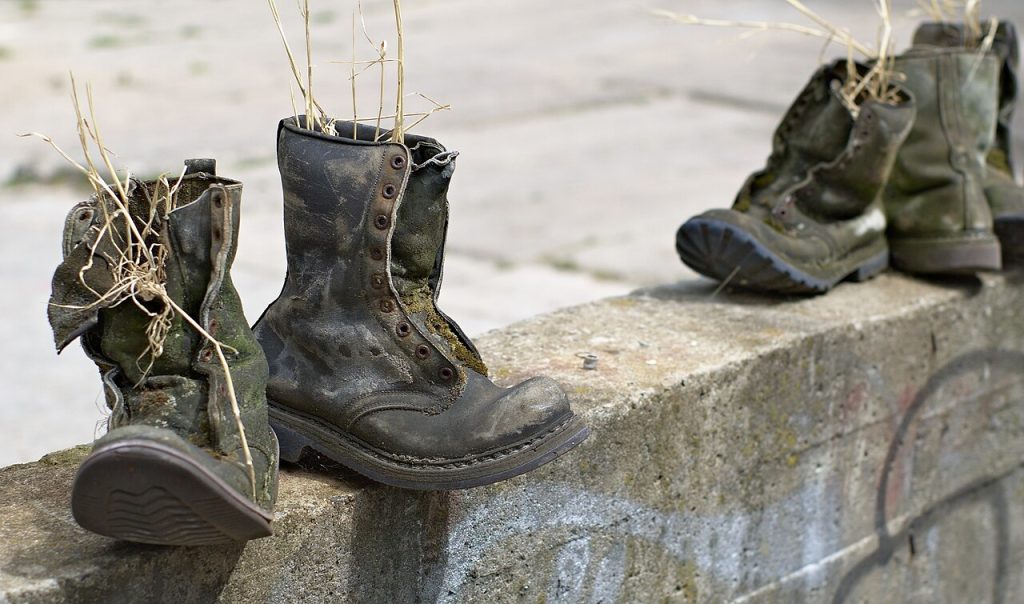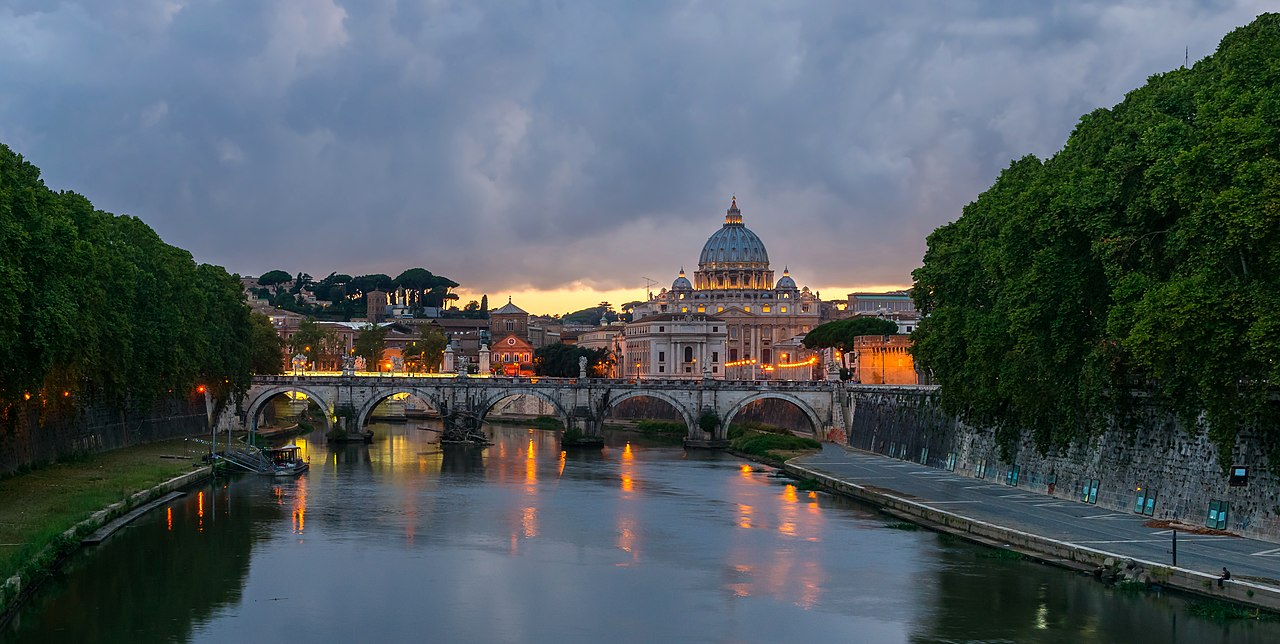Packing Tips for Rome
1. Comfortable Shoes Are a Must
Rome is a walking city, and you’ll likely be covering a lot of ground. From the cobbled streets of Trastevere to the ancient ruins at Forum Romanum, comfortable, sturdy shoes are essential. Opt for sneakers, flats, or comfortable sandals with good support.
- Tip: If you’re visiting in summer, breathable shoes like sandals or light sneakers will keep your feet cool while exploring the city’s attractions.

© Steffen Zahn, licensed under the Creative Commons Attribution 2.0 Generic license
2. Layer Your Clothes for Versatility
Rome has a Mediterranean climate, meaning hot summers and mild winters. In the summer, temperatures can soar well over 30°C (86°F), so pack light, breathable clothing like cotton shirts, shorts, and dresses. For cooler months, layers are key. A light jacket, scarf, and long pants will be perfect for those chillier days, especially in the evenings.
- Tip: In churches, especially St. Peter’s Basilica and Santa Maria Maggiore, modest dress is required — shoulders and knees should be covered. So, pack a scarf or shawl if you’re planning to visit religious sites.
3. Don’t Forget a Hat & Sunglasses
Rome is sunny and bright for most of the year, so bring a wide-brimmed hat or cap to protect your face from the sun, as well as a pair of stylish sunglasses to shield your eyes.
- Tip: Look for a hat that you can easily fold up and pack into your bag when not in use.
4. A Small Backpack or Crossbody Bag
Rome is a city best explored on foot, and having a small bag that’s easy to carry while keeping your essentials close is highly recommended. Consider a crossbody bag or a small backpack for your daily adventures.
- Tip: Pickpocketing can be an issue in tourist-heavy areas like the Colosseum or Spanish Steps, so be sure to keep your belongings secure and avoid carrying large amounts of cash.
5. Electrical Adapter
Italy uses Type F electrical outlets, and the voltage is 230V with a frequency of 50Hz. Don’t forget to bring a travel adapter for your electronics.
- Tip: It’s always handy to have a portable power bank for your phone, especially for capturing photos and navigating with Google Maps.
What You Should Know Before You Go
1. How to Avoid Pickpockets
Pickpocketing is unfortunately common in crowded areas like Termini Station, the Vatican, and popular landmarks. To protect yourself, carry only what you need, and use anti-theft bags with zippers or inner compartments. Always be alert when in busy areas, especially around public transport, tourist attractions, and cafes.
- Tip: If someone suddenly bumps into you or distracts you with a “problem,” you need to know that this is a common tactic for pickpockets. Be aware of your surroundings and avoid displaying valuables, such as your phone or wallet, openly.
2. The Best Time to Visit Rome
Rome is a year-round destination, but the best time to visit is during the shoulder seasons — spring (April to June) and fall (September to October). The weather is pleasant, and the city is less crowded than during the peak summer months.
- Tip: Summer in Rome can be extremely hot, with temperatures exceeding 35°C (95°F). If you’re traveling during these months, be sure to stay hydrated and take regular breaks in the shade.
3. How Tourist Traps Work
While Rome is full of incredible places to visit, be cautious of common tourist traps. For example, “fake roses” and “friendship bracelets” are often sold by street vendors who might pressure you into accepting the item for free, only to demand money afterward. Similarly, overpriced souvenirs are sold at major tourist spots.
- Tip: Politely refuse offers from street vendors and always ask locals for recommendations on where to shop. Be mindful of street performers or “human statues” who may expect a tip after a photo.
4. How Tipping Works
Tipping in Rome isn’t as customary as it is in the US. Service charges are often included in restaurant bills (check for the word “coperto”), so tipping isn’t mandatory. However, it’s always appreciated for good service. A small tip of 5-10% is sufficient for excellent service at a restaurant or cafe. For taxis, rounding up the fare is common.
- Tip: In cafes or bars, it’s typical to leave small change or to tip €1 for exceptional service.
5. Free Museum Days & Discounts
Many museums and cultural sites in Rome offer free entry on specific days of the month. For instance, on the first Sunday of each month, museums like the Colosseum, Vatican Museums, and Galleria Borghese offer free entry. There are also discounts for students, EU citizens, and seniors.
- Tip: To avoid long lines during free-entry days, arrive early or buy skip-the-line tickets online in advance. Check museum websites for specific dates and rules.
6. Public Transport in Rome
Getting around Rome is easy thanks to its well-connected public transport system, including buses, trams, and the metro. The metro consists of three lines: A, B, and C, covering most major tourist destinations.
- Tip: If you plan to use public transport frequently, consider buying a Roma Pass for discounted entry to museums and unlimited travel for 48 or 72 hours.
7. Currency and Payment
Italy uses the Euro (EUR), and credit cards are widely accepted, especially in touristy areas. However, it’s a good idea to carry some cash for small purchases or in case you visit more local establishments that might not accept cards.
- Tip: Many cafes and restaurants in Rome have a “coperto” charge (a small fee for sitting at a table), so check your bill for any extra charges.
8. Learn a Few Basic Italian Phrases
While many Romans speak English, especially in tourist areas, it’s always appreciated when visitors make an effort to speak a little Italian. Basic phrases like “Buongiorno” (Good morning), “Grazie” (Thank you), and “Per favore” (Please) will go a long way.
- Tip: If you’re ordering food or coffee, it’s also helpful to know some basic terms — for example, “un caffè” (a coffee) and “un cappuccino” (a cappuccino).
9. Be Prepared for Crowds
Rome is one of the most visited cities in the world, so be prepared for large crowds at popular attractions such as the Colosseum, Vatican Museums, and Pantheon.
- Tip: To avoid long lines, consider buying tickets online in advance for major attractions. Skip-the-line passes can save you a lot of time, especially during peak seasons.
10. Eating Out in Rome
One of the highlights of any trip to Rome is enjoying the local food. From traditional carbonara pasta to a simple pizza margherita, the city is a food lover’s paradise.
- Tip: Romans love to eat at off-hours, so lunch typically starts around 1 PM and dinner around 8 PM. For the best experience, head to local trattorias or osterias where you’ll find authentic, home-style cooking.
11. Avoid Tourist Traps
Rome is full of touristy restaurants and shops that offer inflated prices. To enjoy authentic Roman experiences, wander off the main squares and explore hidden gems in quieter neighborhoods like Monti, Trastevere, and Prati.
- Tip: Don’t be afraid to ask locals for recommendations. They’ll happily point you to the best, most authentic places.
Final Packing Tip:
Rome is a city that invites exploration. While you’ll be marveling at centuries of history and art, be sure to also leave room for spontaneous adventures. Whether you’re strolling through the cobbled streets or enjoying a quiet moment in a secluded piazza, this city offers treasures at every turn.
Make sure to pack light, plan ahead, and be ready to experience the magic of Rome like a local.
